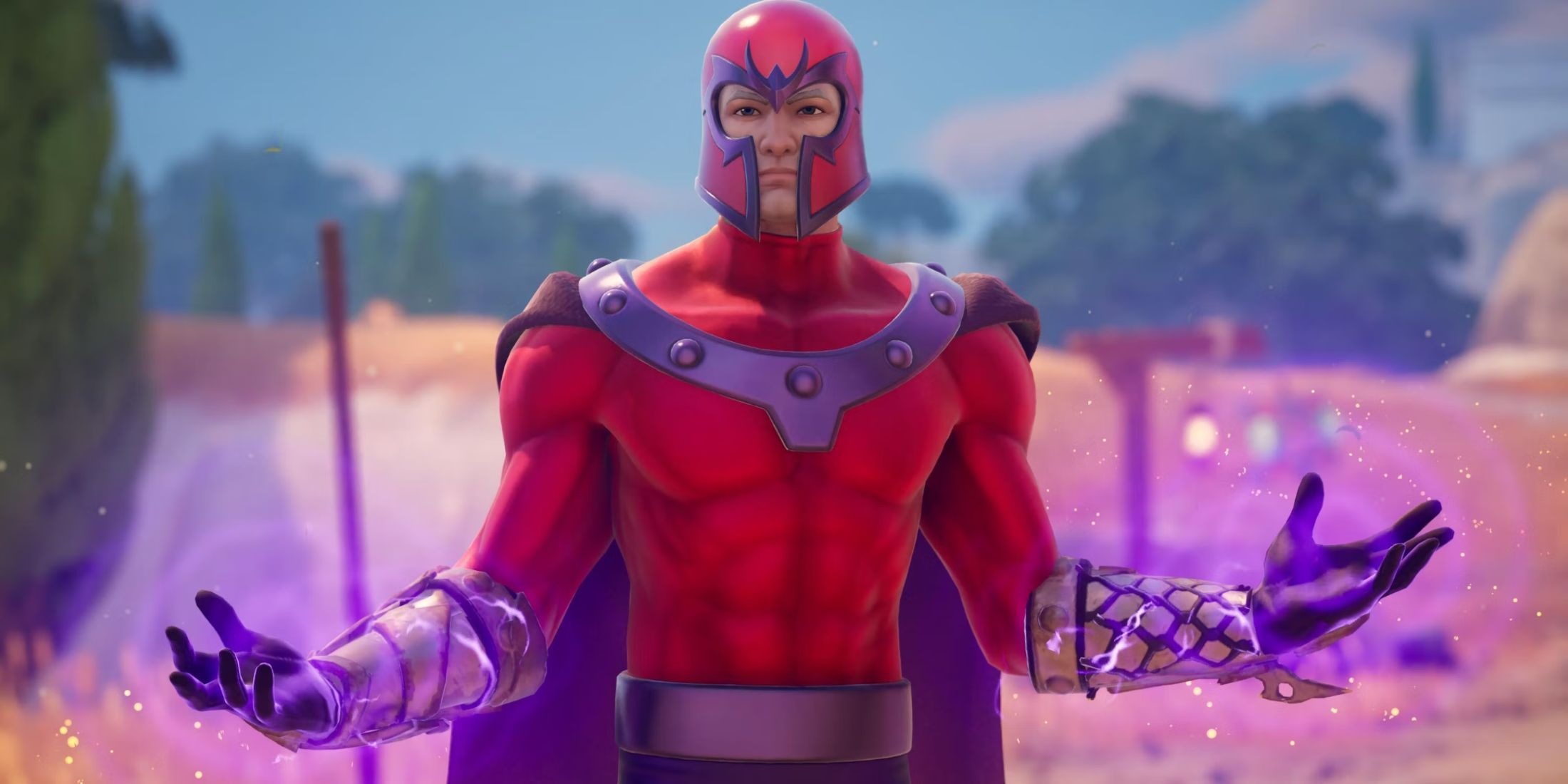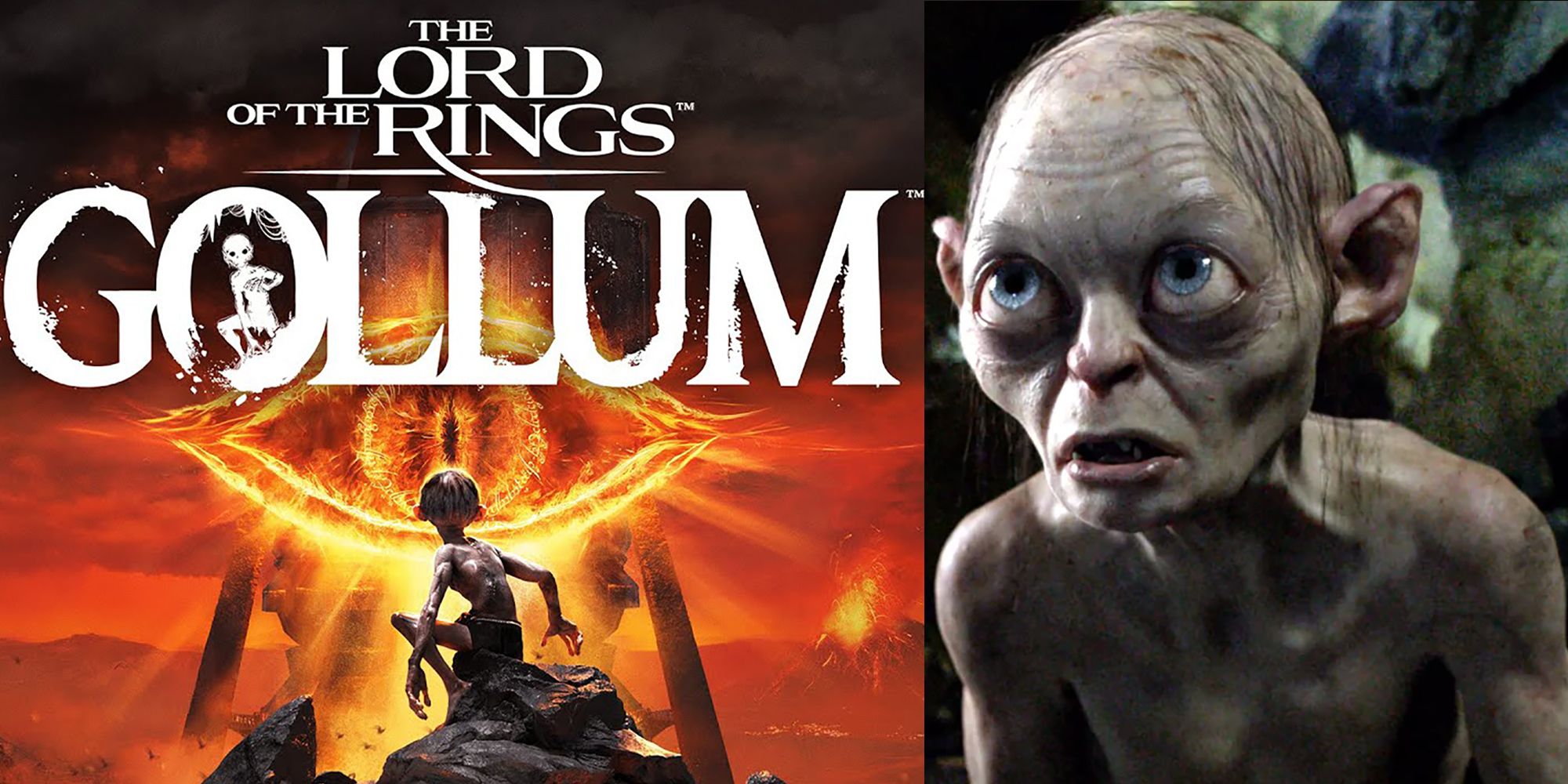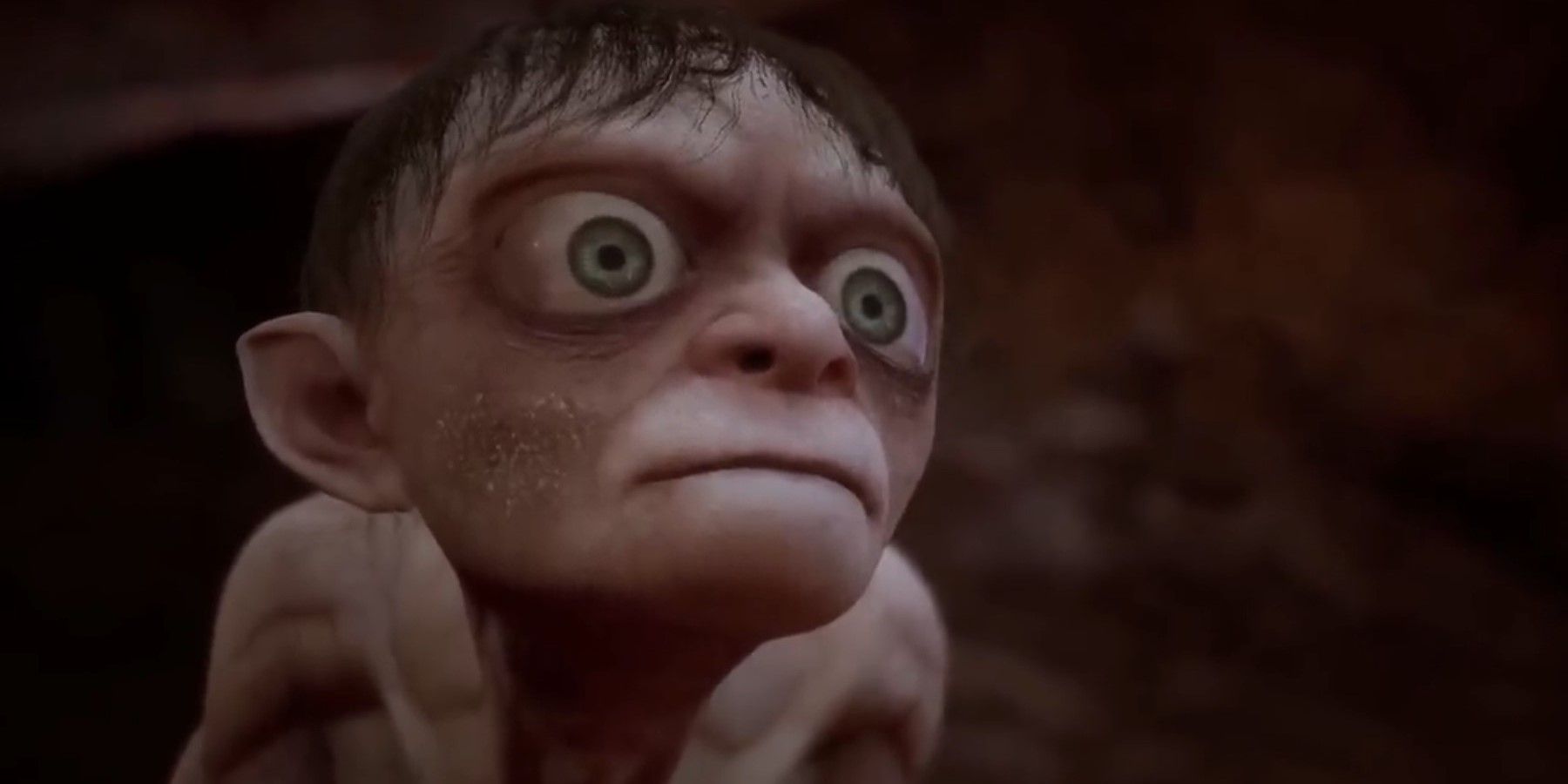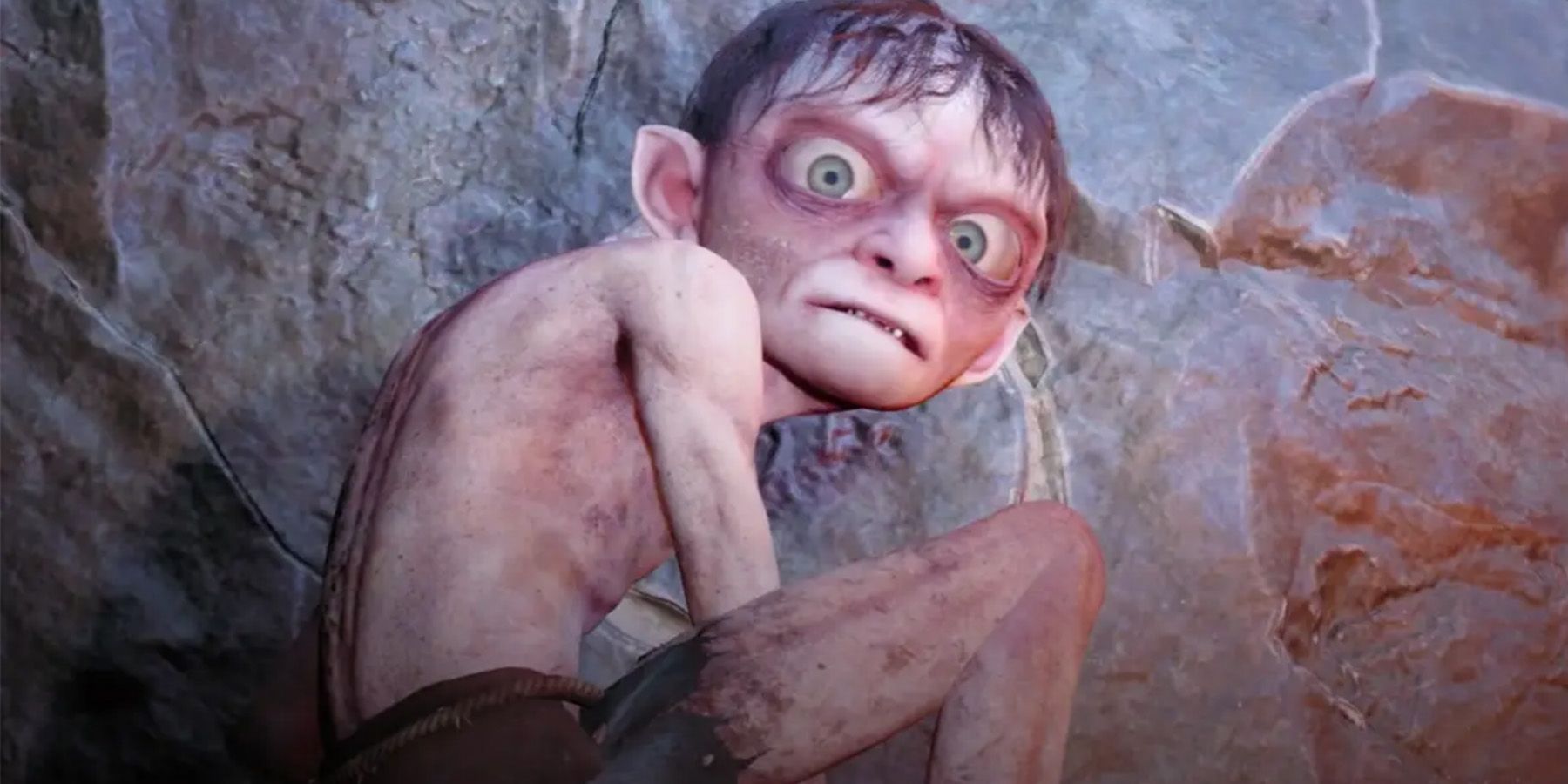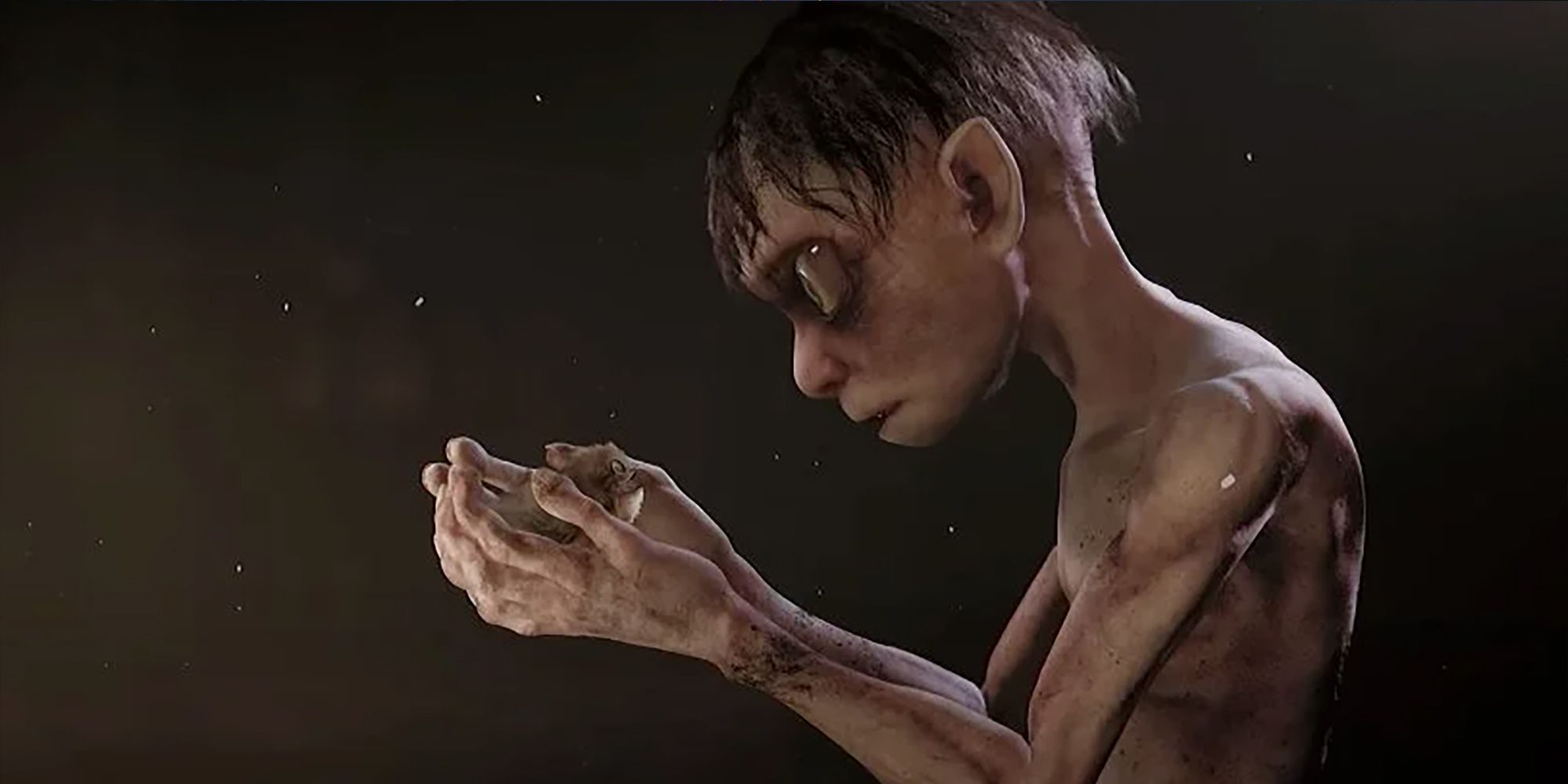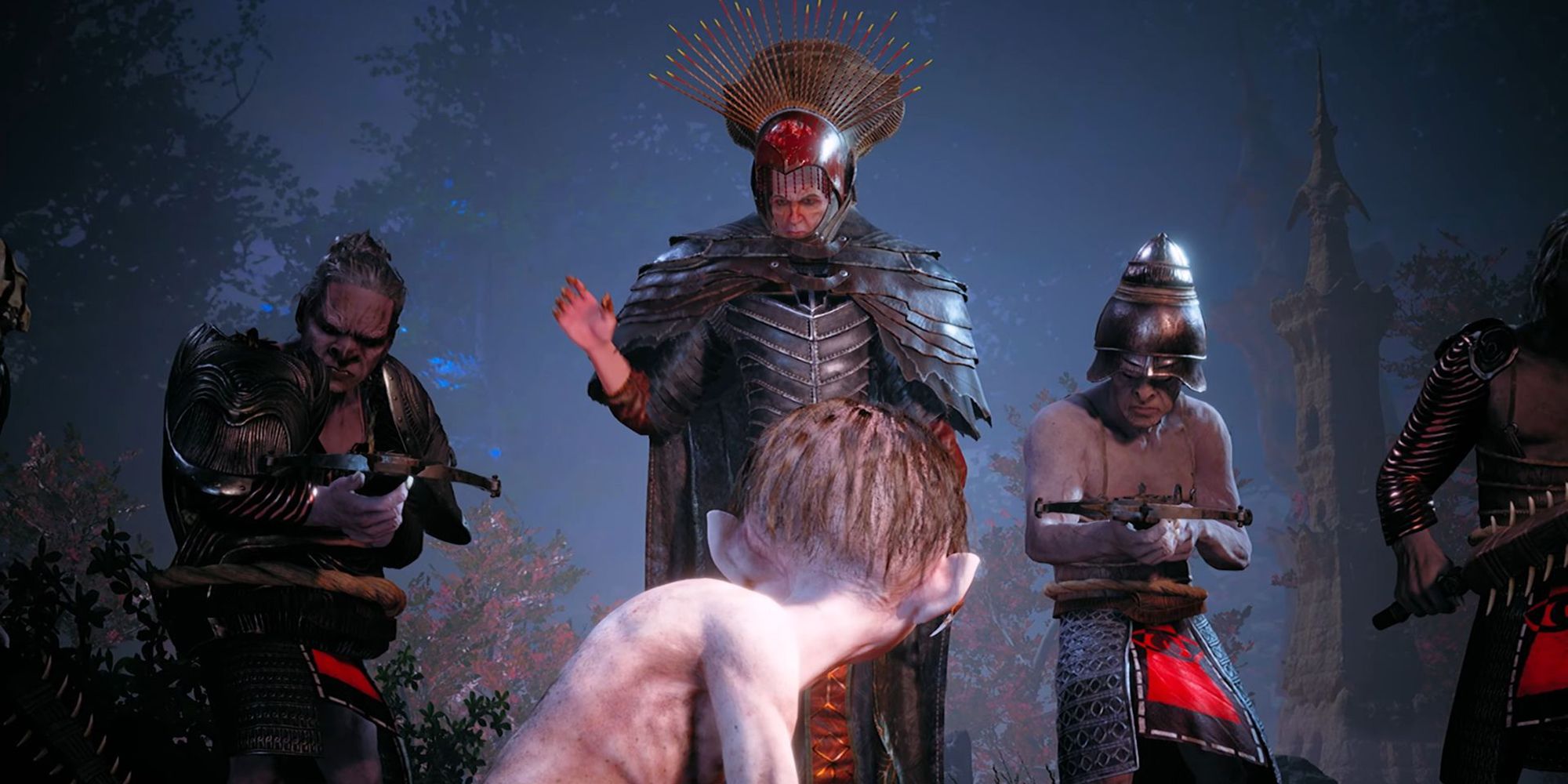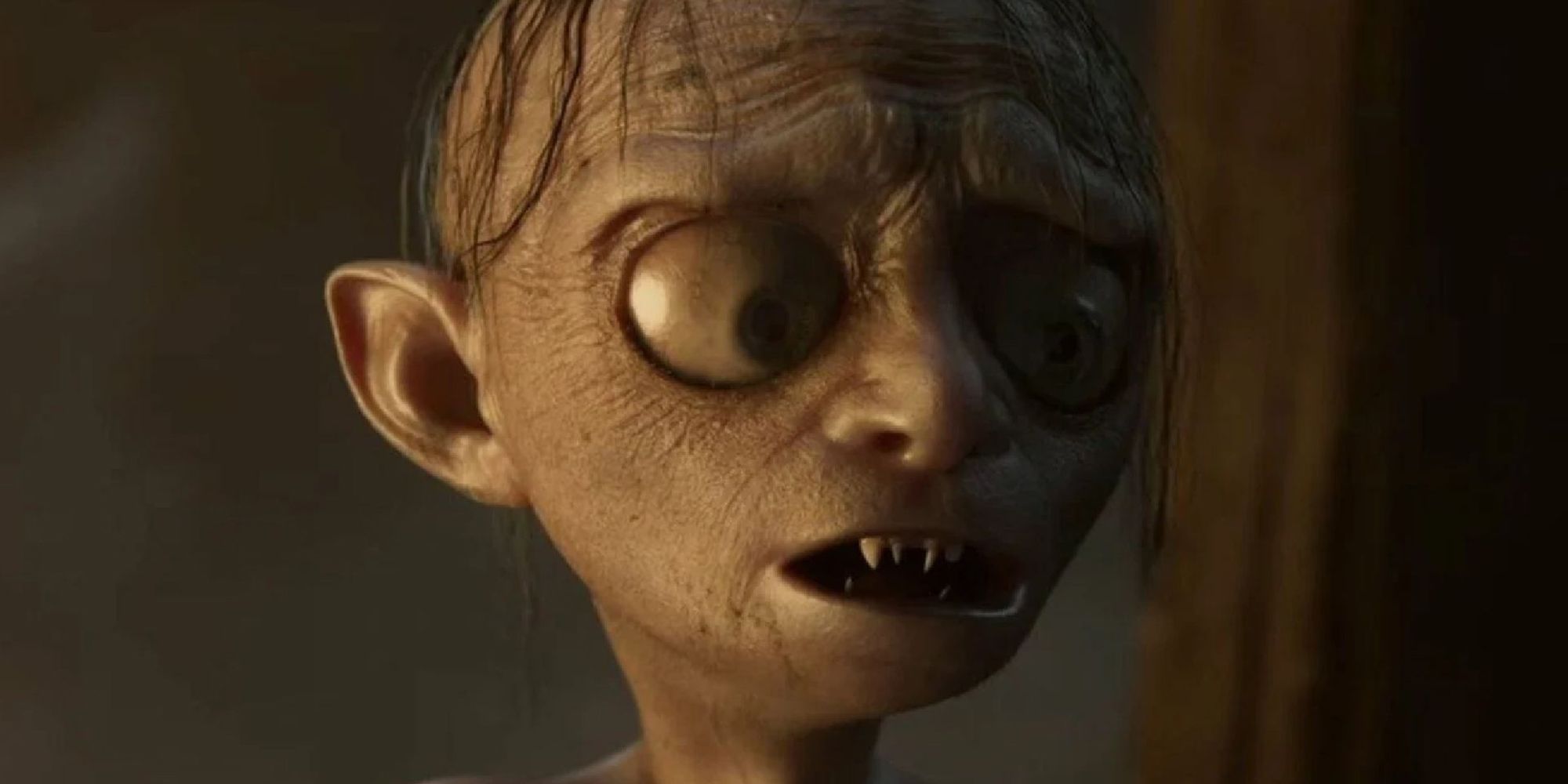LOTR: Gollum has finally been released, after many delays and troubles with production. While Daedalic Entertainment has finally managed to make the game available to the public, they seemingly aren’t finished with it yet. Despite a day-one patch to fix some major issues with how playable LOTR: Gollum turned out to be, gamers are still unimpressed.
Inspite of the problems that gamers have come across in this attempt at a Middle Earth-based stealth game, there are more things to address than issues with the gameplay. There are also a number of things that have changed in the game and its narrative about Gollum and Middle Earth which are worth addressing.
5 Gollum’s Appearance
Gollum’s appearance is one of the major points about the game that wasn’t debated over when it was first revealed to the public through trailers. While nothing too major about the appearance of the beloved Lord of the Rings character was changed for LOTR: Gollum, it is clearly somewhat different from the version portrayed by Andy Serkis in the cinematic version of Middle Earth.
While LOTR: Gollum takes place prior to the events of Lord of the Rings: Fellowship of the Ring, it isn’t by very long. So, it is surprising to see appearance changes such as Gollum having significantly more hair left than he does by the time he appears in the films. Relative to the long life he’s led, the time between his interactions with Gandalf and his meeting with Frodo and Sam on their way to Mordor is pretty small and many fans would likely have been expecting him to be practically unchanged in appearance. Despite these shifts, Gollum/Smeagol is at least recognizable as the character fans are used to in many ways.
4 Gollum’s Voice
Unfortunately, Andy Serkis did not return to reprise his role as Gollum for LOTR: Gollum. Serkis played the character in The Lord of the Rings trilogy of movies as well as in The Hobbit: An Unexpected Journey. However, in the new game, Serkis does not appear. Instead, actor Wayne Forester voices the character, as well as doing all the face capture modeling for the role throughout the game.
The changes to Gollum’s voice are in line with what Daedalic Entertainment told fans to expect from their version of the character. Instead of being aligned with what The Lord of the Rings trilogy did, presenting Gollum as desperate and conniving, the game gives his voice more of a pained protagonist quality. This was in an attempt to have fans not hate the character as much, and to turn him into more of a lost soul fighting with himself. Trying to turn Gollum into too much of a heroic, sympathetic character may have been one of the missteps which have lessened fan and critic opinions about the game so far.
3 Gollum’s Nature
As Daedalic wished to bring about changes, somewhat significant ones, to Gollum’s character for LOTR: Gollum, it is unsurprising that the nature of the character does end up feeling quite different from the role he has played in other on-screen depictions. Gollum still loves the ring and refers to the lost item as his precious, but there is a great deal of focus on other aspects of his personality throughout LOTR: Gollum. Despite the game beginning with Aragorn capturing Gollum and delivering him to Gandalf, Gollum manages to be presented as a hero because he is pitted against even more evil creatures like the forces of Sauron.
LOTR: Gollum does whatever it can to showcase the pain Gollum is in after losing the ring and in continuing to struggle with himself. It also tries to paint him as a rebellious genius in his attempts to rail against Mordor and break out of confinement when he is locked in their prison beneath Barad-Dur. These changes to the character feel like they were the destined outcome of making a game entirely about the character, but they still feel quite jarring to fans of the Lord of the Rings movies, and even ones who have read the books, which Daedalic insisted were where their inspiration for the character came from.
2 Gollum’s Timeline
There are also some slight tweaks in terms of when Gollum was captured by Aragorn and Gandalf. The timeline of Middle Earth is an important thing, and even in The Lord of the Rings trilogy, there are numerous references to the various ages of Middle Earth that depict the history of the races and various wars which have been fought.
While Gollum, the events of The Hobbit, and the events of The Lord of the Rings all occur within the third age of Middle Earth, there is a slight change in history between the books of JRR Tolkien and LOTR: Gollum. Unfinished Tales stated that Gollum was captured in the year 3017, whereas LOTR: Gollum states it was in 3012. These sorts of minor changes could be for story reasons, or merely because there was some other inconsistency in the team’s history of Middle Earth.
1 Gollum’s Conversational Ability
The entirety of LOTR: Gollum takes place within flashbacks as told by Gollum to Gandalf after being captured. While the game’s changes to Gollum’s voice and personality make some allowance for how talkative he has become, it seems like an incredibly unusual framing device for a story about a character who can hardly speak straight by the time he meets Frodo and Sam.
However, the game makes Gollum a lot more talkative generally, and he doesn’t just speak to himself all the time either. There are various small changes such as this, and how the game seems to have made him more powerful in some ways and less powerful in others. But LOTR: Gollum does seem to have given fans of The Lord of the Rings series something to play that allows them a brand-new experience within the world of Middle Earth.
LOTR: Gollum was released on May 25th, 2023, and is currently available for PlayStation 4, PlayStation 5, Xbox One, Xbox Series X/S, and Windows.


